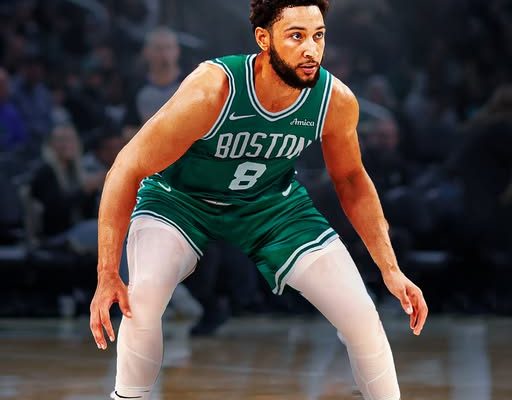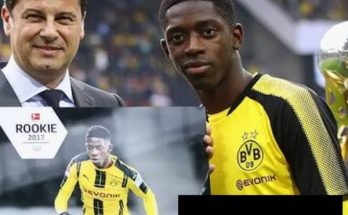The air in Boston has a different kind of buzz this offseason, a mix of apprehension and cautious optimism, as the Celtics navigate a landscape dramatically altered by unforeseen departures and the looming absence of their cornerstone, Jayson Tatum, for the entire upcoming season. The reigning champions, a team built on a bedrock of versatility, defense, and interconnected offensive flow, suddenly find themselves staring at significant holes in their frontcourt rotation. Kristaps Porzingis and Jrue Holiday, instrumental figures in their recent triumph, are gone, traded to alleviate the burden of the luxury tax and recalibrate the roster. Luke Kornet, a reliable backup, has walked, and the future of veteran Al Horford, a crucial defensive anchor and calming presence, remains uncertain as he considers retirement or signing elsewhere. This void, particularly in the big man rotation, has opened a door that few would have anticipated just a few months ago: the potential arrival of former No. 1 overall pick, Ben Simmons.
Simmons, a name that evokes a spectrum of reactions from frustration to fascination, now finds himself in a career crossroads. Once hailed as a generational talent, a point-forward with unparalleled passing vision, elite defensive instincts, and a physique capable of guarding all five positions, his trajectory has been marred by injuries, well-documented confidence issues, and a persistent inability or unwillingness to develop a reliable jump shot. His recent stint with the Clippers saw him accept a significantly reduced role, showcasing flashes of his defensive prowess and playmaking acumen in limited minutes, but far from the All-Star production he once delivered. Yet, it is precisely this reduced role, coupled with Boston’s desperate need for frontcourt help and defensive versatility, that makes a potential union intriguing.
The Celtics, without Tatum to shoulder the offensive load, are no longer aiming for a championship in the immediate term. The 2025-26 season has, by necessity, become something of a “gap year,” a period for re-evaluation, development, and perhaps, a low-risk, high-reward gamble. This is where Simmons enters the picture. His contractual situation, likely a short-term, prove-it deal at a relatively low cost, aligns perfectly with Boston’s financial constraints and their need to navigate the second apron of the luxury tax. He wouldn’t be brought in to be the guy, or even a primary scoring option, which has historically been a source of immense pressure and scrutiny for him. Instead, his role would be clearly defined and focused on his undeniable strengths: defense, passing, and rebounding.
On the defensive end, Simmons, even with reduced explosiveness, remains a high-level operator. His 6-foot-10 frame, quick hands, and exceptional lateral agility allow him to switch seamlessly across positions, guarding perimeter players with surprising effectiveness and holding his own against bigger wings and even some centers in small-ball lineups. Head coach Joe Mazzulla has consistently emphasized switchability and defensive versatility, and Simmons slots naturally into this identity. With Holiday and Porzingis gone, Boston’s defensive floor has undeniably dropped. Simmons, even in a bench or hybrid role, could help mitigate some of that loss, taking on tough defensive assignments and providing valuable help on the glass. He could be the disruptive force, the defensive playmaker who can turn a deflection into a fast break, igniting the Celtics’ transition game, which will be crucial for a team likely to rely more heavily on opportunistic scoring without Tatum’s half-court brilliance.
Offensively, the challenge with Simmons has always been his shooting. Defenders famously sag off him, daring him to shoot, which clogs the paint and complicates offensive spacing. However, in a system with Jaylen Brown, Derrick White, and new additions like Anfernee Simons and Georges Niang, the Celtics still possess a core of capable shooters. Simmons’ elite court vision and passing ability, particularly in transition and as a point-forward, could unlock new dimensions for Boston’s offense. Imagine him pushing the pace after a defensive stop, finding cutters like Brown or White for easy layups, or kicking out to Hauser or Niang for open threes. His drive-and-dish game, which was so effective in Philadelphia, could thrive with an array of willing and able shooters around him. He doesn’t need to score to be effective; his value comes from his ability to create for others and orchestrate offense, especially when Tatum is not on the floor to initiate. The Celtics’ offense, particularly in transition, would gain a much-needed dynamic element, something they might otherwise lack without Tatum’s playmaking.
Furthermore, Simmons’ ability to play as a small-ball center is a tantalizing prospect for Boston. With Porzingis gone and Horford potentially out, their center depth is a pressing concern. Neemias Queta, Luka Garza, and Amari Williams are currently the primary options, with only Queta having seen meaningful NBA minutes. Simmons, at 6-foot-10, has the size and defensive instincts to play the five in certain matchups, allowing the Celtics to maintain their switchability and defensive pressure. While he’s not a traditional rim protector, his active hands and ability to defend the perimeter could open up interesting lineup combinations, allowing the Celtics to play smaller and faster when desired. This positional fluidity, a hallmark of past Celtics teams, would be invaluable as they seek to re-establish their identity.
The psychological aspect of Ben Simmons’ game cannot be understated. His confidence has visibly wavered, and the intense scrutiny he faced in Philadelphia and Brooklyn undoubtedly took a toll. Boston, with its championship culture, veteran leadership, and a fan base that often embraces reclamation projects (think Isaiah Thomas, though in a very different context), could provide the supportive environment he needs. The clear hierarchy of the team, with Brown and White now elevated in their roles, means Simmons wouldn’t be expected to be the primary offensive engine, thus alleviating immense pressure. A short-term contract incentivizes him to perform, to prove he still belongs at a high level. If he can embrace a defined role focused on his strengths, rather than dwelling on his weaknesses, this could be the ideal setting for him to rebuild his value and, more importantly, his confidence.
Of course, the risks are evident. His injury history, particularly with his back, is a legitimate concern. His scoring limitations are well-documented, and while Boston has shooters, his presence can still occasionally cramp spacing. There’s also the mental hurdle; can he truly put past struggles behind him and fully commit to a new role? These are valid questions, but the potential upside, given the low financial commitment and the Celtics’ dire need for frontcourt depth and defensive versatility, makes the gamble worth considering.
In essence, Ben Simmons in Boston would be a fascinating experiment in reinvention. It’s a pragmatic move for a team in a transitional year, offering a unique skillset that directly addresses their current weaknesses. It’s also a lifeline for a player desperate to prove he can still contribute meaningfully in the NBA. If the Celtics can harness his defensive brilliance, his unparalleled passing, and his rebounding, even in a reduced capacity, and if Simmons can embrace this new chapter with a renewed sense of purpose and confidence, then this seemingly improbable pairing could turn out to be a quiet success story, laying the groundwork for a more robust future for both the player and the franchise. The pressure cooker of being the franchise centerpiece will be off, replaced by a chance to simply play basketball, guard, pass, and rebound, in a system that can mask his deficiencies and amplify his unique talents. This isn’t about him becoming an All-Star again in Boston, at least not immediately; it’s about him becoming a valuable, contributing piece on a team looking to stay competitive and develop amidst significant change. It’s about a former No. 1 pick finding a new purpose in green, a chance to finally shed the weight of expectations and simply play the game he loves, proving that even a star can find his light again in the right constellation.



